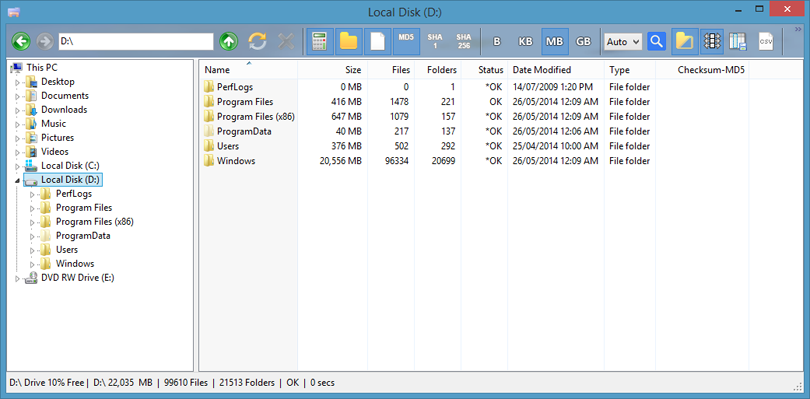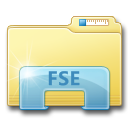 |
FOLDER SIZE EXPLORER
Simple and free Windows Explorer with folder sizes and more... |
Folder Sizes in Windows Explorer
Microsoft's Windows Explorer has been one of its core applications since Windows 95. It is essentially a task-based file
management application that is central to the functioning of Windows.
One of the peculiarities of Windows Explorer, seeing that it is a file
management application, is that it does not have the ability to display
folder sizes. This seems to be a feature that users want
but it has never been fully implemented by Microsoft.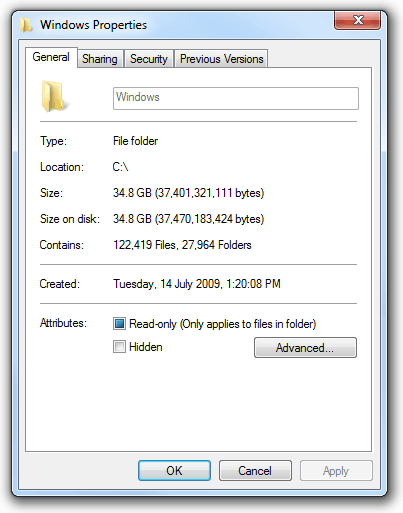
The most likely reason it does not display folder sizes is that it would slow down browsing of the file system significantly. To show the size of a folder, Windows Explorer would have to read ever file within every sub-folder before it could return a result. Unfortunately, this takes time and uses up a lot of the systems processing power. Regardless, it seems odd that they didn't provide it as an option in Explorer's settings. The column for size is already there for files so it would just be a matter of writing the code to calculate the folder size when the option is enabled.
Nevertheless, Explorer does provide some features to help users calculate folder sizes. The easiest and most well known method is to use the context menu and check the properties of the folder. If you right click a folder and select properties Explorer will recursively scan every file and display the total size as it progresses in the properties window you can see in the screenshot on the right. This works well though sometimes it's hard to know when the process has finished as it can pause for a time before continuing on. It would be nice to see something that tell you it's completed at the end. The main problem with this method though is that you have to right click every folder to get its size. As soon as you close the properties window the information is lost. It's a shame it's not added to the size column so that you don't have to write it down or right click the folder again. This makes it very time consuming when you're trying to quickly determine which folders are using up the most disk space on your drive.
Another way to see the size of a folder is to place your mouse cursor over the folder and wait for the pop-up tool tip to appear. Though this feature works fine for smaller folders it's pretty useless for larger ones. For example, when I place my mouse over the c:\windows folder as shown in the screenshot below, the tooltip just states that it's larger than 7MB. Actually, it's probably best to disable this feature altogether to improve performance when using Explorer. This feature has been known to cause lengthy delays when browsing certain folders like those on a network. This feature is enabled by default in Windows 7 and can be turned on or off via Explorer's menu by clicking Organize - Folder and search options - View tab - display file size information in folder tips (screenshot below).
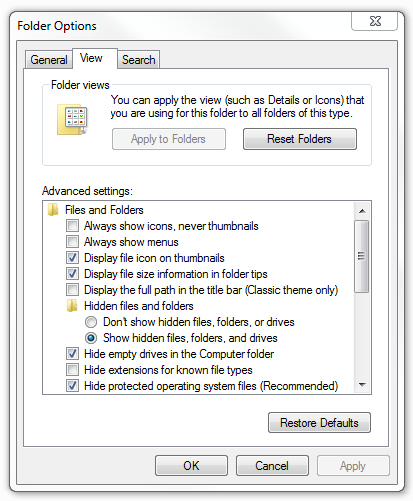
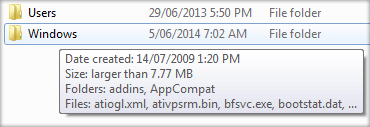
Still, none of the above methods for calculating folder sizes provides a simple and quick way to help you find the folders that are taking up the majority of disk space on your local drive or network. For this reason Folder Size Explorer was created as a freeware application. Folder Size Explorer is a simple Windows Explorer clone that displays the file system items exactly as Explorer would except with the added option to calculate folder sizes. It also provides columns for folder count, file count and file checksums calculations should you need them. The folder size calculation can be enabled or disabled quickly by clicking an icon on the toolbar. You can change the size notation of the size column in Explorer with the click of a button from bytes to megabytes, kilobytes or gigabytes. During the folder size calculation it allows you to press escape or cancel at any time to stop the scanning so as to quickly display the standard folder and file items. You can also press the skip button to skip the size calculation of a particular folder that is taking too long to calcualte and move on to the next.
Finally, unlike the native Windows Explorer you can export and save a list of the files and folders with all their columns of information to a csv file. These csv files can then be opened and manipulated in external programs such as Excel, Word and Notepad. Another nice feature about Folder Size Explorer is that you can search for folders containining a specific string and then calculate their size. The same feature allows you to export custom lists of items to csv or calculate MD5, SHA-1 or SHA-256 checksums of matched items only. Below are a couple of screenshots of Folder Size Explorer on Windows 7 and 8.1. It has been designed to be as simple and clean as possible supporting Windows XP, Vista, 7, 8 and Windows Server 2003, 2008, 2012 including R2. (Both x86 and x64 versions are supported). Folder Size Explorer can be downloaded for free here.
Folder Size Explorer in Windows 7
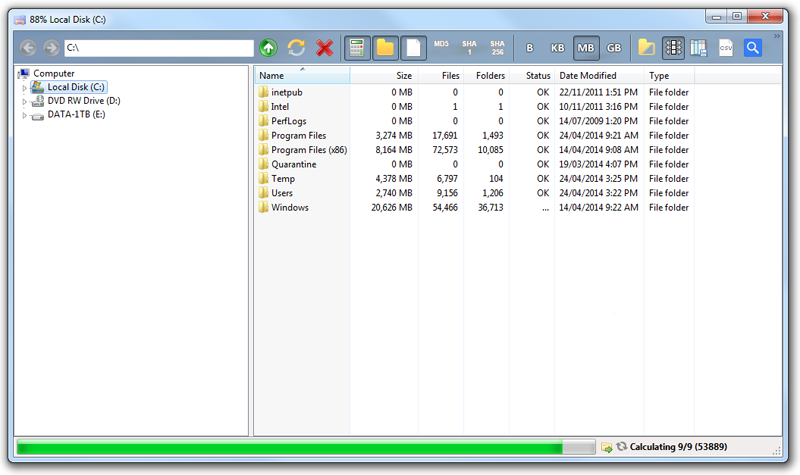
Folder Size Explorer in Windows 8
